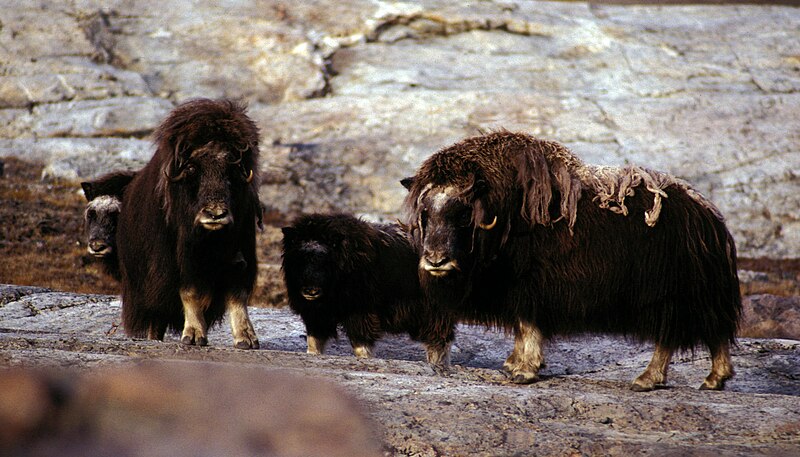Tracing the Decline of the Tundra Muskox
Saturday, September 11th, 2010
The tundra muskox (Ovibos moschatus) nowadays is endemic to Greenland and the islands of the Arctic Archipelago. Studies show that these animals have notably low genetic diversity. According to researchers, this hasn’t always been the case. Like other megafaunal mammals, the muskoxen thrived in Eurasia and North America before extinctions occurred 10,000 years ago around the time of the Pleistocene-Holocene transition. The muskoxen in the late Pleistocene were also more genetically diverse than their modern counterparts.
Researchers investigated whether the collapse in range and loss of genetic diversity were correlated. They obtained DNA data from muskox fossil materials recovered from localities in Alaska, Canada, and Greenland and compared the results to existing genetic information on modern muskoxen. Radiocarbon dating was used to determine the age of the specimens. Some of the ancient DNA were dated by accelerator mass spectrometry in Beta Analytic Inc.’s lab in Miami, Florida, while other samples were subjected to liquid scintillation dating in other labs in Europe and Canada.
 Muskoxen found in Kong Oscar Fjord area, NE Greenland (Wikimedia Commons)
Muskoxen found in Kong Oscar Fjord area, NE Greenland (Wikimedia Commons)
Researchers found no clear evidence that the loss of genetic diversity of the muskox is correlated with the collapse in range. They have discovered that the genetic variability of the species was reduced after the Last Glacial Maximum but before the mid-Holocene. Precisely when this happened and what conditions caused such decline remain unknown. Perhaps an even more compelling question is how the muskox managed to survive the late quaternary extinctions when so many high-latitude mammals have not.
Noted for its thick coat of hair, the muskox belongs to the Bovidae family. Its name came from the musky or strong odor produced by the males to attract the females during the mating season.
Source: Late Quaternary loss of genetic diversity in muskox (Ovibos) by Ross DE MacPhee, Alexei N. Tikhonov, Dick Mol, and Alex D. Greenwood, BMC Evolutionary Biology Volume 5, Published October 2005
SEND SAMPLES |
|---|
| Contact us for prices |
| Prepare Sample |
| Submit Data Sheet Online |
| See Shipment Guidelines |
| Shipping Addresses |
Carbon 14 Dating ServiceWould you like us to track your package? Are you filling out the online form? Read about sample material return Beta Analytic Other Services- d13C and d15N - d18O for carbonates - d2H and d18O for water |
Terms and Conditions



